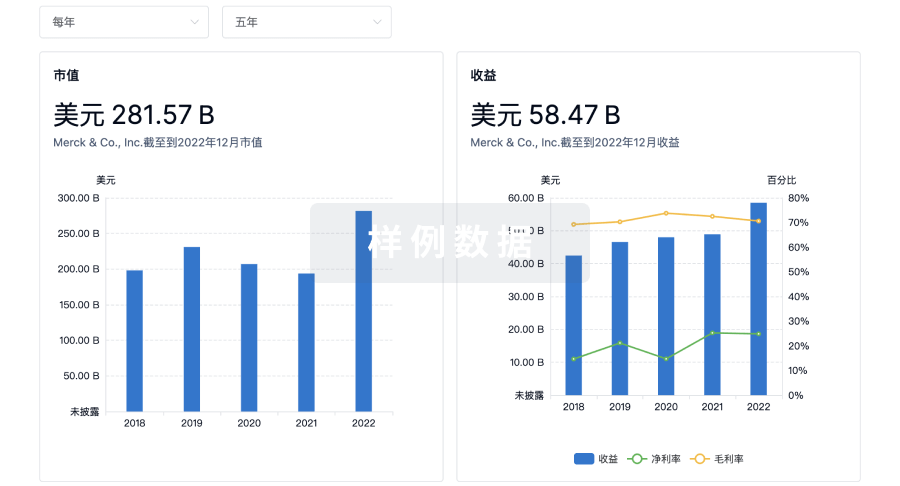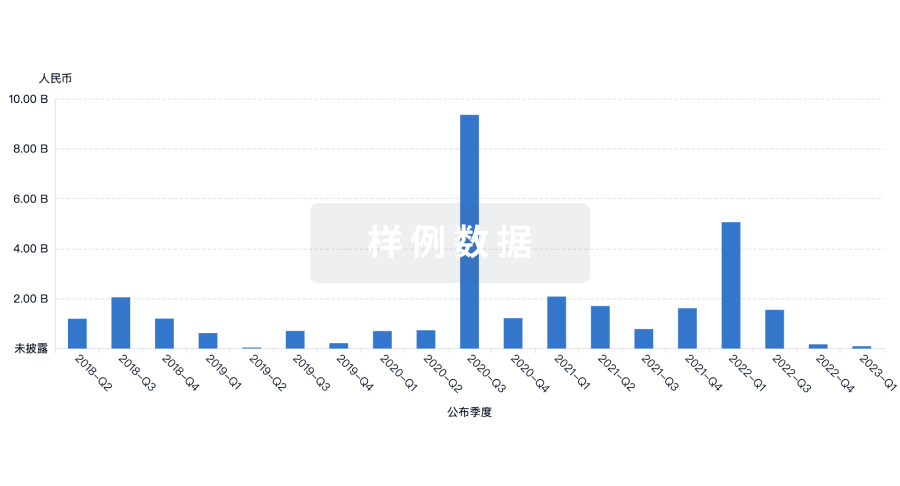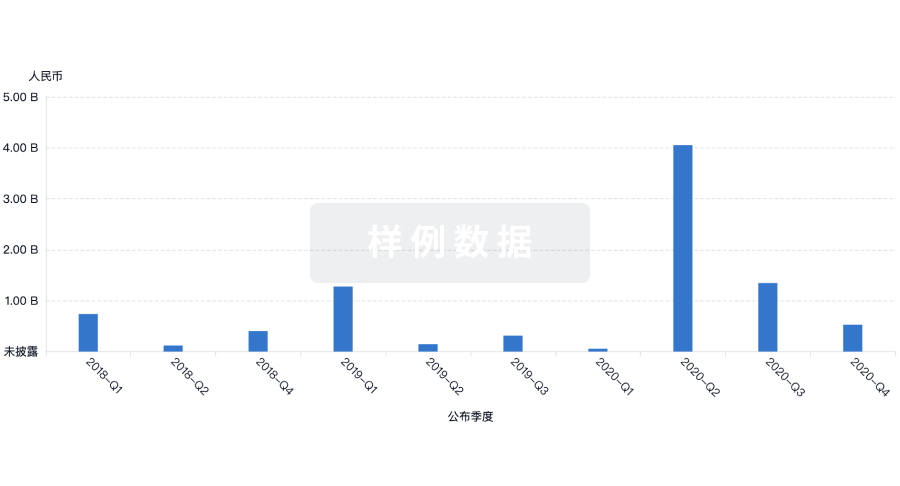预约演示
更新于:2025-09-24

PRODIGEST BV
更新于:2025-09-24
概览
标签
消化系统疾病
免疫系统疾病
小分子化药
化学药
疾病领域得分
一眼洞穿机构专注的疾病领域
暂无数据
技术平台
公司药物应用最多的技术
暂无数据
靶点
公司最常开发的靶点
暂无数据
| 排名前五的药物类型 | 数量 |
|---|---|
| 小分子化药 | 1 |
| 化学药 | 1 |
关联
2
项与 PRODIGEST BV 相关的药物作用机制 Bcr-Abl抑制剂 [+9] |
在研适应症 |
非在研适应症 |
最高研发阶段批准上市 |
首次获批国家/地区 美国 |
首次获批日期2006-06-28 |
3
项与 PRODIGEST BV 相关的临床试验NCT03051399
Clinical Evaluation of the Effects of EpiCor Brand Yeast Fermentate (Made Using Saccharomyces Cerevisiae) on Digestive Comfort, Intestinal Barrier Function and Prebiotic Modulation of the Gut Microbiota.
Previous in vitro studies suggest that EpiCor is well fermented in the colon and has prebiotic potential. The repeated long-term administration of low doses of EpiCor in the Simulator of the Human Intestinal Microbial Ecosystem (SHIME) has shown that this product is able to induce gradual changes in the colonic environment by: i) being selectively fermented, leading to butyrate increase in the colon; ii) stimulating Lactobacilli growth in the lumen and adherence to the mucosal surface, and iii) decreasing potential pathogens. In addition, the fermentation-derived metabolites produced in the colon were shown to potentially benefit the host by decreasing cytokine levels in vitro. As a result, the investigators hypothesize that EpiCor may help to improve bowel function and generally contribute to enhanced gut health. Therefore, this pilot study is intended to assess the effects of long-term administration of EpiCor on a population with mild symptoms of intestinal dysfunction.
The primary objective of this exploratory pilot study is to assess the effect of long term administration of EpiCor on bowel function and gastrointestinal well-being, by means of validated questionnaires.
This study has 4 secondary objectives: 1) The first secondary objective of this study is to assess the protective effects of EpiCor on intestinal barrier function, by performing a gut sugar permeability test in combination with indomethacin challenge; 2) The second secondary objective is to assess the effects of EpiCor on intestinal barrier function, by measuring blood Zonulin and endotoxin levels in combination with indomethacin challenge; 3) The third secondary objective of this study is to assess the prebiotic properties of EpiCor by collecting fecal samples. The microbial community composition, lactate and SCFA profiles and proteolytic activity markers in feces will be determined. Proteolytic activity markers will also be measured in urine samples; 4) The fourth secondary objective of this study is to assess the effects of EpiCor on local and systemic immune system performance by measuring secretory IgA levels in feces and cytokines in blood.
The primary objective of this exploratory pilot study is to assess the effect of long term administration of EpiCor on bowel function and gastrointestinal well-being, by means of validated questionnaires.
This study has 4 secondary objectives: 1) The first secondary objective of this study is to assess the protective effects of EpiCor on intestinal barrier function, by performing a gut sugar permeability test in combination with indomethacin challenge; 2) The second secondary objective is to assess the effects of EpiCor on intestinal barrier function, by measuring blood Zonulin and endotoxin levels in combination with indomethacin challenge; 3) The third secondary objective of this study is to assess the prebiotic properties of EpiCor by collecting fecal samples. The microbial community composition, lactate and SCFA profiles and proteolytic activity markers in feces will be determined. Proteolytic activity markers will also be measured in urine samples; 4) The fourth secondary objective of this study is to assess the effects of EpiCor on local and systemic immune system performance by measuring secretory IgA levels in feces and cytokines in blood.
开始日期2015-07-06 |
申办/合作机构  PRODIGEST BV PRODIGEST BV [+3] |
NCT02604316
SATIN: Satiety Innovation, Study 2. Effect of Novel Fibres (Arabinoxylan and Beta-glucan) in Appetite, Metabolic and Gut Health.
The proposed study will address the effect of developed novel food products through processing innovation on motivation to eat, biomarkers of satiety, nutrient bioavailability and gut health using in vivo studies and validating new in vivo approaches.
Specifically in this protocol the investigators will address, in a short human intervention study the effect of a potentially satiating product on appetite, appetite biomarkers, particularly the influence on gut microbiota, tolerance and safety of the products in healthy obese and overweight participants in free living conditions.
Specifically in this protocol the investigators will address, in a short human intervention study the effect of a potentially satiating product on appetite, appetite biomarkers, particularly the influence on gut microbiota, tolerance and safety of the products in healthy obese and overweight participants in free living conditions.
开始日期2014-01-01 |
申办/合作机构  University of Aberdeen University of Aberdeen [+11] |
NCT01724411
SATIN: Satiety Innovation, Study 1
The proposed study will address the effect of developed novel food products through processing innovation on motivation to eat, biomarkers of satiety, nutrient bioavailability and gut health using in vivo studies and validating new in vivo approaches.
Specifically in this protocol we will address, in a short human intervention study the effect of a potentially satiating product on appetite, appetite biomarkers, particularly the influence on gut microbiota, tolerance and safety of the products in healthy obese and overweight volunteers in free living conditions.
Specifically in this protocol we will address, in a short human intervention study the effect of a potentially satiating product on appetite, appetite biomarkers, particularly the influence on gut microbiota, tolerance and safety of the products in healthy obese and overweight volunteers in free living conditions.
开始日期2012-08-01 |
申办/合作机构  University of Aberdeen University of Aberdeen [+11] |
100 项与 PRODIGEST BV 相关的临床结果
登录后查看更多信息
0 项与 PRODIGEST BV 相关的专利(医药)
登录后查看更多信息
1
项与 PRODIGEST BV 相关的文献(医药)2015-01-01·The journal of nutrition, health & aging3区 · 医学
Twelve-month consumption of a polyphenol extract from olive (Olea europaea) in a double blind, randomized trial increases serum total osteocalcin levels and improves serum lipid profiles in postmenopausal women with osteopenia
3区 · 医学
Article
作者: Sam Possemiers ; I Pinheiro ; MJ Davicco ; R Filip ; Arne Heyerick ; V Coxam ; G Raszewski
OBJECTIVES:
Osteoporosis is a skeletal disorder characterized by impaired bone turnover and compromised bone strength, thereby predisposing to increased risk of fracture. Preclinical research has shown that compounds produced by the olive tree (Olea europaea), may protect from bone loss, by increasing osteoblast activity at the expense of adipocyte formation. The aim of this exploratory study was to obtain a first insight on the effect of intake of an olive extract on bone turnover in postmenopausal women with decreased bone mass (osteopenia).
DESIGN AND SETTING:
For that, a double blind, placebo-controlled study was performed in which participants were randomly allocated to either treatment or placebo groups.
PARTICIPANTS:
64 osteopenic patients, with a mean bone mineral density (BMD) T-score between -1.5 and -2.5 in the lumbar spine (L2-L4) were included in the study.
INTERVENTION AND MEASUREMENTS:
PARTICIPANTS received for 12 months daily either 250 mg/day of olive extract and 1000 mg Ca (treatment) or 1000 mg Ca alone (placebo). Primary endpoints consisted of evaluation of bone turnover markers. Secondary endpoints included BMD measurements and blood lipid profiles.
RESULTS:
After 12 months, the levels of the pro-osteoblastic marker osteocalcin were found to significantly increase in the treatment group as compared to placebo. Simultaneously, BMD decreased in the placebo group, while remaining stable in the treatment group. In addition, improved lipid profiles were observed, with significant decrease in total- and LDL-cholesterol in the treatment group.
CONCLUSION:
This exploratory study supports preclinical observations and warrants further research by showing that a specific olive polyphenol extract (Bonolive®) affects serum osteocalcin levels and may stabilize lumbar spine BMD. Moreover, the improved blood lipid profiles suggest additional health benefits associated to the intake of the olive polyphenol extract.
3
项与 PRODIGEST BV 相关的新闻(医药)2025-03-20
·美通社
伊利诺伊州莫门斯
2025年3月21日
/美通社/ -- 发表于
《Microorganisms》
的新研究揭示了NatureKnit™对人类肠道微生物组的重大影响。NatureKnit™是FutureCeuticals开发的一种纯天然且待批专利的肠道健康创新产品。
这项研究由FutureCeuticals与比利时根特领先的微生物组研究机构ProDigest合作开展,结果表明NatureKnit在肠道中具有显著的益生元效应。 研究表明,NatureKnit在促进微生物组的代谢活性和调节方面表现出显著且出乎意料的效果,特别是与流行的纯化纤维成分相比。 该研究采用了ProDigest经过验证且广受认可的M-SHIME
®
模型,该模型模拟了人体胃肠道和微生物生态系统,从而实现了对活跃人体微生物组的研究。
“这项研究很好地展示了肠道模拟模型如何帮助我们全面理解功能成分与微生物组之间的关系,”根特大学CMET学院成员兼ProDigest首席执行官Massimo Marzorati博士表示。 “通过模拟人体肠道的复杂性,我们能够获得详尽的洞察,从而缩小实验室研究与实际应用之间的差距。”
结果显示,仅仅两克的NatureKnit就能引发一个缓慢而温和的发酵过程,并产生持续且长久的益生元效应。 与流行的纯化纤维相比,NatureKnit在48小时内对健康肠道细菌总丰度、细菌物种丰富度和总短链脂肪酸(SCFA)的测量具有显著更强的益生元效应。
“与通常快速发酵且仅提供短期效益的流行纯化纤维相比,NatureKnit的持续益生元效应及其在整个大肠中与微生物组相互作用的能力,是一个令人振奋的发现,”FutureCeuticals创新总监Brendan Kesler表示。 “NatureKnit在促进SCFA生成方面的卓越能力不仅对肠道健康大有裨益,而且为NatureKnit如何影响肠道以外的整体人类健康奠定了基础。”
“这些发现表明,NatureKnit在益生元、后生元和微生物组领域代表着一项令人振奋的进展。”Kesler补充道, “这些结果为未来的肠道健康产品带来了重要机遇,这些产品基于天然和可持续的方法,旨在改善微生物组和整体健康。”
关于FutureCeuticals:
FutureCeuticals, Inc.是
NatureKnit
®的开发商,也是为功能性食品、饮料和膳食补充剂市场研究、开发和生产植物性粉末和提取物的领导者。
微生物疗法
2020-02-20
Microbiome specialist MRM Health enters into its first industry collaboration with DuPont Nutrition & Biosciences in the field of metabolic diseases.
Ghent, Belgium - February 19, 2020
- Microbiome specialist MRM Health enters into its first industry collaboration with DuPont Nutrition & Biosciences in the field of metabolic diseases. Furthermore, MRM Health has raised more than €14 million to advance its in-house clinical and preclinical development programs in the field of microbiome-based therapeutics and strengthens its partnership with VIB, KU Leuven and Ghent University.
MRM Health NV
, a biopharmaceutical company focused on the discovery and development of innovative therapeutics based on the human microbiome, announced today a collaboration with
DuPont Nutrition & Biosciences
and the successful completion of its first external investment round with the participation of Ackermans & van Haaren, DuPont Nutrition & Biosciences, MRM Technologies, Qbic II and VIB.
MRM Health and DuPont Nutrition & Biosciences will join forces to tackle a range of metabolic diseases, in which the proprietary MRM Health technology platform and selected DuPont strains will be combined to develop novel therapeutics based on live bacterial strain combinations.
“We are excited to enter into a partnership with DuPont Nutrition & Biosciences for the discovery and development of innovative therapies for metabolic diseases. We believe their extensive capabilities in the microbiome field together with our expertise and proprietary technology platform for developing gut microbiome-based therapeutics are a great combination in the quest to deliver a novel class of natural and efficacious solutions for millions of patients worldwide,”
said Sam Possemiers, CEO and co-founder of MRM Health.
“We are thrilled to partner with MRM Health to jointly develop the next generation of microbiome products. Combining MRM Health’s unique technology platform with DuPont’s knowledge and experience is a unique opportunity to accelerate the discovery and development of new therapeutic products in areas such as metabolic health.”
said Sebastien Guery, Human Microbiome Venture Leader, DuPont Nutrition & Biosciences.
Sam Possemiers continued: “
In addition, we are delighted to have the financial support of long-term investor Ackermans & van Haaren, venture capital fund Qbic II and expert microbiome players MRM Technologies and DuPont, and to continue and strengthen our long-standing strategic partnership with VIB.”
Through the strategic research partnership with VIB, MRM Health will leverage the extensive complementary microbiome and bioinformatics capabilities of the lab of prof. Jeroen Raes (VIB – KU Leuven) and the multidisciplinary knowhow in arthritis and inflammatory diseases of prof. Dirk Elewaut (VIB – UGent) and his team.
Jeroen Raes (VIB-KU Leuven) stated:
“I’m very excited by the impressive MRM Health expertise in microbiome product development. Our know-how in microbiome analysis, gut microbiology and ecology perfectly matches their platform to develop and deliver novel treatments for a wide range of indications.”
The €14 million investment round provides MRM Health with the financing resources to advance its lead program in Inflammatory Bowel Disease to clinical studies in different patient populations and to further progress its ongoing discovery programs to deliver potential breakthrough treatments in spondyloarthritis and other indications.
Jens Van Nieuwenborgh and Piet Bevernage, representing Ackermans & van Haaren, commented:
“We are enthusiastic to participate in MRM Health and to support their further growth and development. The company has a unique technology platform, has already delivered on a promising lead portfolio and entered into a key collaboration with the leading industry player DuPont. Based on extensive expertise in the gut microbiome, a clear strategy and a strong partnership with VIB, we believe MRM Health is well positioned to discover and develop novel treatments for diseases with a high unmet medical need and collaborate with more industry partners.”
Jean Van Nuwenborg, managing partner Qbic II, expressed his enthusiasm for this new promising venture:
“It’s a pleasure to be able to support MRM Health with Qbic II and partner with this impressive investor consortium. The size of the round speaks to the promise the project holds and to the outstanding scientific backbone of the company developed by Sam and his team and to which one of Qbic II’s partner universities contributed and will continue to do so.”
Johan Cardoen, Managing Director of VIB added:
“This new venture represents a unique opportunity to make the scientific discoveries made in the VIB labs of Jeroen Raes and Dirk Elewaut available to the pharmaceutical and life science industry. We are pleased to continue our collaboration in the microbiome field with MRM Health and invest in the company.”
MRM Health was incorporated by MRM Technologies through a partial de-merger of the operations of ProDigest, a global specialist in the field of intestinal and microbiome research, allowing ProDigest to continue and further expand its independent and unique scientific research services to clients across sectors from pharmaceutical, food and feed industry. These activities are based on ProDigest’s SHIME® technology (Simulator of the Human Intestinal Microbial Ecosystem, unique laboratory models of the human and animal gastrointestinal tract) which can be used to simulate the metabolism and biodistribution of pharmaceuticals in development, as well as the interaction of the intestinal microbiome with pharmaceuticals, food ingredients, animal feed and health products.
Contact
Sam Possemiers
(CEO) &
Christiane Verhaegen
(CFO)
Tel.: +32 92 41 11 88
Mobile: +32 486 84 60 11
Mail:
sam.possemiers@mrmhealth.com
&
christiane.verhaegen@
mrmhealth.com
Note to the editor
Credits
When reporting on this news, please mention all partners involved.
When retweet mention us: @VIBLifeSciences @ugent @KU_Leuven @Danisco
MRM Health
MRM Health NV, Ghent, Belgium, is a biopharmaceutical company focused on the discovery and development of innovative therapeutics based on the human microbiome. MRM Health was incorporated early 2020 by MRM Technologies, a Center of Expertise for microbiome research based in the biotech cluster in Ghent, in a joint venture with VIB, an excellence-based entrepreneurial life sciences research institute in Flanders, Belgium, that focuses on translating basic scientific results into pharmaceutical, agricultural and industrial applications.
MRM Health combines a number of proprietary innovative technologies as its discovery engine. This includes direct access to the most advanced simulator of the human gut, the Simulator of the Human Intestinal Microbial Ecosystem (SHIME®), allowing to model the complete intestine and its microbiome in the lab, in both health and disease. In addition to multiple academic and expert advisor partnerships, MRM Health also leverages, through the strategic VIB partnership, the extensive microbiome and bioinformatics capabilities of the VIB-KU Leuven lab of prof. Jeroen Raes and the multidisciplinary knowhow in inflammatory diseases and patient insights of prof. Dirk Elewaut (VIB-UGent).
To overcome critical bottlenecks currently hampering microbiome-based product development, MRM Health has developed a unique and differentiating platform for the discovery and development of novel microbiome-based therapeutics and has set up a diversified pipeline. Its most advanced program is MH002, a drug candidate for Inflammatory Bowel Disease (IBD), which includes Ulcerative Colitis (UC) and Crohn’s disease (CD). MH002 is an optimized consortium of bacteria, consisting of 6 rationally selected and well-characterized commensal strains.
MRM Health additionally has ongoing discovery programs in Spondyloarthritis and specific metabolic diseases and is targeting several other medical conditions with unmet medical need. In addition to the drug candidates, its pipeline includes two advanced single strain probiotics with differentiating Mode-of-Action and advanced development status for the medical nutrition / OTC and consumer markets (PD01 and PD12).
MRM Health has a corporate collaboration with DuPont Nutrition Biosciences in the discovery and development of microbiome-based therapeutics in the field of metabolic diseases. The Company is strategically supported by strong local and international investors, including Ackermans & van Haaren, DuPont, MRM Technologies, Qbic II and VIB.
DuPont
DuPont (NYSE: DD) is a global innovation leader with technology-based materials, ingredients and solutions that help transform industries and everyday life. Our employees apply diverse science and expertise to help customers advance their best ideas and deliver essential innovations in key markets including electronics, transportation, construction, water, health and wellness, food, and worker safety. More information can be found at
.
DuPont Nutrition & Biosciences
DuPont Nutrition & Biosciences applies expert science to advance healthy and sustainable solutions for the food, beverage, dietary supplement and pharmaceutical industries. We also use pioneering biotechnology to enable bio-based solutions that make products and industrial processes more efficient and sustainable. For more information:
www.
dupontnutritionandbiosciences.
com
or
Ackermans & van Haaren
Ackermans & van Haaren (Euronext Brussels : ACKB) is a diversified group operating in four core sectors, Marine Engineering & Contracting, Private Banking, Real Estate & Senior Care and Energy & Resources. It also provides growth capital to sustainable companies in a.o. the healthcare and agricultural sector, as illustrated by its investments in 2019 in Biolectric (biogas), Biotalys (biological food and crop protection) and Medikabazaar (online supply of medical equipment).
MRM Technologies
MRM Technologies, headquartered in Ghent, Belgium, was incorporated in 2016 as center of expertise in microbiome research and development. In 2017, Korys, the investment company of the Colruyt family joined the MRM Technologies founders as a long-term equity partner.
MRM Health was incorporated by MRM Technologies through a partial de-merger of the operations of ProDigest, a global specialist in the field of intestinal and microbiome research, allowing ProDigest to continue expanding its unique scientific research services to clients across sectors from pharmaceutical, food and feed industry, as an independent entity.
Qbic II
Qbic is a seed and early-stage and sector agnostic inter-university fund investing in spin-offs and young innovating companies that have a technology link with Qbic’s partner universities and research institutions. Qbic is managed by an independent team of seasoned investment and business professionals. The first Qbic fund - Qbic I - has been incorporated in 2012 with a capital of € 40,7 million and invested in 18 companies. Qbic I is currently focusing on follow on investments and exits. The second Qbic fund - Qbic II - started in December 2016 and has a capital € of 58,9 million. With close to € 100 million under management, Qbic is one of the largest inter-university spin-off funds in Europe.
VIB
VIB is an excellence-based entrepreneurial research institute in life sciences that focuses on translating basic scientific results into pharmaceutical, agricultural and industrial applications. VIB’s Innovation & Business team currently has a portfolio of +250 patent families. This team conducts about 120 partnering agreements with innovative companies each year. VIB is also firmly-rooted in a long-standing tradition of setting up start-up companies. Since its foundation in 1996, VIB has created 23 start-up companies. VIB is funded by the Flemish government and works in close partnership with five Flemish universities – Ghent University, KU Leuven, University of Antwerp, Vrije Universiteit Brussel and Hasselt University. More information:
Ghent University
Ghent University is one of the major universities in the Dutch-speaking region of Europe. It distinguishes itself as a socially committed and pluralistic university in a broad international perspective. About 80 faculty departments, spread over 11 faculties, offer high-quality courses in every one of their scientific disciplines.
Next to this, Ghent University strategically invests in multidisciplinary clusters to expand its industrial R&D network. Key technology transfer activities include industrial collaboration programs, IP licensing and spin-off creation. Over the past ten years, this joint effort has resulted in 439 granted patents, the establishment of 68 spin-off companies and an intensive collaboration with companies.
KU Leuven
As the number one European university for innovation, KU Leuven actively invests in launching innovative technologies in the commercial market by creating spin-off companies, securing and licensing intellectual property, and collaborating with industry. KU Leuven supports researchers and students in transforming their innovative ideas and technologies into commercial products and services that impact people’s lives worldwide. Since its creation in 1972, KU Leuven Research & Development has supported the creation and growth of 128 spin-off companies, directly employing more than 6,700 people. KU Leuven’s spin-off companies constitute a huge economic leverage for the Leuven region. More information:
微生物疗法
2020-02-20
MRM Health also announced that it raised more than €14m to advance its clinical and preclinical development programs in the field of microbiome-based therapeutics with partner participation.
MRM Health also announced that it raised more than €14m to advance its clinical and preclinical development programs in the field of microbiome-based therapeutics with partner participation.
COPENHAGEN, Feb. 19, 2020 –
DuPont Nutrition & Biosciences
(DuPont) today announced a collaboration with the
MRM Health NV
(MRM Health), a biopharmaceutical company, focused on the discovery and development of innovative therapeutics based on the human microbiome. MRM Health also confirmed the successful completion of its first external investment round with the participation of Ackermans & van Haaren, DuPont, MRM Technologies, Qbic II and VIB.
DuPont and MRM Health will join forces to tackle a range of metabolic diseases, in which the proprietary MRM Health technology platform and some selected DuPont strains will be combined to develop novel therapeutics based on live bacterial strain combinations.
“We are thrilled to partner with MRM Health to jointly develop the next generation of microbiome products. Combining MRM Health’s unique technology platform with DuPont knowledge and experience provides a unique opportunity to accelerate the discovery and development of new therapeutic products in areas such as metabolic health,” said Sebastien Guery, Human Microbiome Venture Leader, DuPont Nutrition & Biosciences.
“We are excited to enter into a partnership with DuPont for the discovery and development of innovative therapies for metabolic diseases. We believe their extensive capabilities in the microbiome field together with our expertise and proprietary technology platform for developing gut microbiome-based therapeutics are a great combination in the quest to deliver a novel class of natural and efficacious solutions for millions of patients worldwide. In addition, we are delighted to have the financial support of long-term investor Ackermans & van Haaren, venture capital fund Qbic II and expert microbiome players MRM Technologies and DuPont, and to continue and strengthen our long-standing strategic partnership with VIB,” said Sam Possemiers, CEO and co-founder of MRM Health.
The proceeds of the investment round provide MRM Health with the financing resources to advance its lead program
(1)
in inflammatory bowel disease (IBD) to clinical studies in different patient populations and to further progress its ongoing discovery programs to deliver potential breakthrough treatments in Spondyloarthritis and other indications. Through the strategic partnership with VIB, MRM Health will leverage the extensive complementary microbiome and bioinformatics capabilities of the lab of Professor Jeroen Raes, VIB – KU Leuven and the multidisciplinary know-how and patient insights in arthritis and inflammatory diseases of Professor Dirk Elewaut, VIB – UGent and his team.
MRM Health was incorporated by MRM Technologies through a partial de-merger of the operations of ProDigest, a global specialist in the field of intestinal and microbiome research, allowing ProDigest to continue and further expand its independent and unique scientific research services to clients across sectors from pharmaceutical, food and feed industry. These activities are based on ProDigest’s SHIME® technology (Simulator of the Human Intestinal Microbial Ecosystem, unique laboratory models of the human and animal gastrointestinal tract) which can be used to simulate the metabolism and biodistribution of pharmaceuticals in development, as well as the interaction of the intestinal microbiome with pharmaceuticals, food ingredients, animal feed and health products.
About MRM Health
MRM Health NV, Ghent, Belgium, is a biopharmaceutical company focused on the discovery and development of innovative therapeutics based on the human microbiome. MRM Health was incorporated early 2020 by MRM Technologies, a Center of Expertise for microbiome research based in the biotech cluster in Ghent, in a joint venture with the Flemish Institute of Biotechnology (VIB), an excellence-based entrepreneurial life sciences research institute in Flanders, Belgium, that focuses on translating basic scientific results into pharmaceutical, agricultural and industrial applications.
MRM Health has a corporate collaboration with DuPont Nutrition & Biosciences in the discovery and development of microbiome-based therapeutics in the field of metabolic diseases. The company is strategically supported by strong local and international investors, including Ackermans & van Haaren, DuPont, MRM Technologies, Qbic II and VIB.
About MRM Technologies
MRM Technologies, headquartered in Ghent, Belgium, was incorporated in 2016 as center of expertise in microbiome research and development. In 2017, Korys, the investment company of the Colruyt family joined the MRM Technologies founders as a long-term equity partner.
About Ackermans & van Haaren
Ackermans & van Haaren (Euronext Brussels: ACKB) is a diversified group operating in four core sectors, Marine Engineering & Contracting, Private Banking, Real Estate & Senior Care and Energy & Resources. It also provides growth capital to sustainable companies in a.o. the healthcare and agricultural sector, as illustrated by its investments in 2019 in Biolectric (biogas), Biotalys (biological food and crop protection) and Medikabazaar (online supply of medical equipment).
About Qbic II
Qbic is a seed and early-stage and sector agnostic inter-university fund investing in spin-offs and young innovating companies that have a technology link with Qbic’s partner universities and research institutions. Qbic is managed by an independent team of seasoned investment and business professionals. The first Qbic fund – Qbic I – has been incorporated in 2012 with a capital of € 40,7 million and invested in 18 companies. Qbic I is currently focusing on follow on investments and exits. The second Qbic fund – Qbic II – started in December 2016 and has a capital € of 58,9 million. With close to € 100 million under management, Qbic is one of the largest inter-university spin-off funds in Europe.
About VIB
VIB is an excellence-based entrepreneurial research institute in life sciences that focuses on translating basic scientific results into pharmaceutical, agricultural and industrial applications. VIB’s Innovation & Business team currently has a portfolio of +250 patent families. This team conducts about 120 partnering agreements with innovative companies each year. VIB is also firmly rooted in a long-standing tradition of setting up start-up companies. Since its foundation in 1996, VIB has created 23 start-up companies. VIB is funded by the Flemish government and works in close partnership with five Flemish universities – Ghent University, KU Leuven, University of Antwerp, Vrije Universiteit Brussel and Hasselt University. More information:
.
About KU Leuven
As the number one European university for innovation, KU Leuven actively invests in launching innovative technologies in the commercial market by creating spin-off companies, securing and licensing intellectual property, and collaborating with industry. KU Leuven supports researchers and students in transforming their innovative ideas and technologies into commercial products and services that impact people’s lives worldwide. Since its creation in 1972, KU Leuven Research & Development has supported the creation and growth of 128 spin-off companies, directly employing more than 6,700 people. KU Leuven’s spin-off companies constitute a huge economic leverage for the Leuven region. More information:
.
About Ghent University
Ghent University is one of the major universities in the Dutch-speaking region of Europe. It distinguishes itself as a socially committed and pluralistic university in a broad international perspective. About 80 faculty departments, spread over 11 faculties, offer high-quality courses in every one of their scientific disciplines.
Next to this, Ghent University strategically invests in multidisciplinary clusters to expand its industrial R&D network. Key technology transfer activities include industrial collaboration programs, IP licensing and spin-off creation. Over the past 10 years, this joint effort has resulted in 439 granted patents, the establishment of 68 spin-off companies and an intensive collaboration with companies.
About DuPont Nutrition & Biosciences
DuPont Nutrition & Biosciences applies expert science to advance healthy and sustainable solutions for the food, beverage, dietary supplement and pharmaceutical industries. We also use pioneering biotechnology to enable bio-based solutions that make products and industrial processes more efficient and sustainable. For more information:
www.
dupontnutritionandbiosciences.
com
or
.
About DuPont
DuPont (NYSE: DD) is a global innovation leader with technology-based materials, ingredients and solutions that help transform industries and everyday life. Our employees apply diverse science and expertise to help customers advance their best ideas and deliver essential innovations in key markets including electronics, transportation, construction, water, health and wellness, food and worker safety. More information can be found at
.
# # #
2/19/2020
DuPont™, the DuPont Oval Logo, and all trademarks and service marks denoted with ™,
SM
or
®
are owned by affiliates of DuPont de Nemours, Inc. unless otherwise noted.
For further information contact:
Richard Donovan
M: +33 671 58 98 54
richard.donovan@dupont.com
(1)
The most advanced program is MH002, a drug candidate for Inflammatory Bowel Disease (IBD), which includes Ulcerative Colitis (UC) and Crohn’s disease (CD). MH002 is an optimized consortium of bacteria, consisting of 6 rationally selected and well-characterized commensal strains.
100 项与 PRODIGEST BV 相关的药物交易
登录后查看更多信息
100 项与 PRODIGEST BV 相关的转化医学
登录后查看更多信息
组织架构
使用我们的机构树数据加速您的研究。
登录
或

管线布局
2025年12月15日管线快照
管线布局中药物为当前组织机构及其子机构作为药物机构进行统计,早期临床1期并入临床1期,临床1/2期并入临床2期,临床2/3期并入临床3期
临床前
2
登录后查看更多信息
当前项目
| 药物(靶点) | 适应症 | 全球最高研发状态 |
|---|---|---|
达沙替尼 ( Bcr-Abl x EphA2 x FYN x LCK x PDGFRβ x Protein kinases x SRC x YES1 x c-Kit ) | 克罗恩病 更多 | 临床前 |
Quercetin Dihydrate ( PIM2 ) | 克罗恩病 更多 | 临床前 |
登录后查看更多信息
药物交易
使用我们的药物交易数据加速您的研究。
登录
或

转化医学
使用我们的转化医学数据加速您的研究。
登录
或

营收
使用 Synapse 探索超过 36 万个组织的财务状况。
登录
或

科研基金(NIH)
访问超过 200 万项资助和基金信息,以提升您的研究之旅。
登录
或

投资
深入了解从初创企业到成熟企业的最新公司投资动态。
登录
或

融资
发掘融资趋势以验证和推进您的投资机会。
登录
或

生物医药百科问答
全新生物医药AI Agent 覆盖科研全链路,让突破性发现快人一步
立即开始免费试用!
智慧芽新药情报库是智慧芽专为生命科学人士构建的基于AI的创新药情报平台,助您全方位提升您的研发与决策效率。
立即开始数据试用!
智慧芽新药库数据也通过智慧芽数据服务平台,以API或者数据包形式对外开放,助您更加充分利用智慧芽新药情报信息。
生物序列数据库
生物药研发创新
免费使用
化学结构数据库
小分子化药研发创新
免费使用

